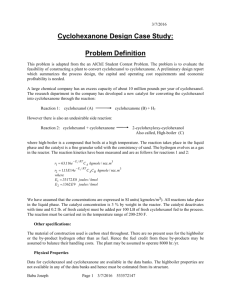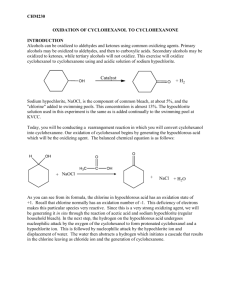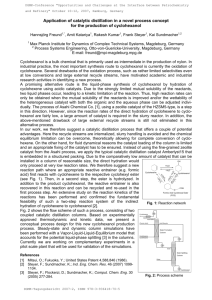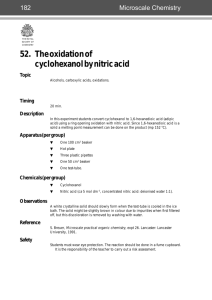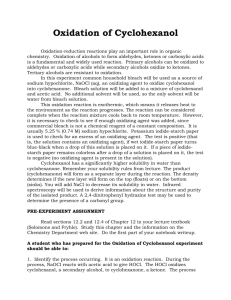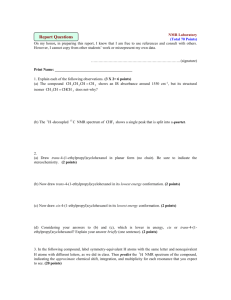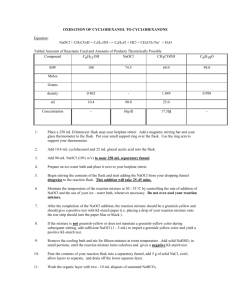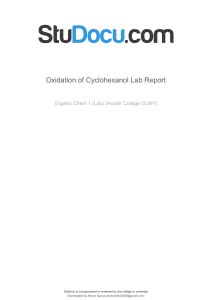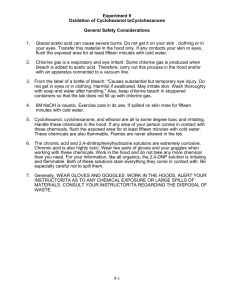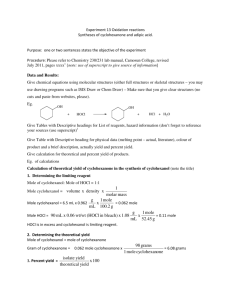a metabolite of cyclohexanone
advertisement
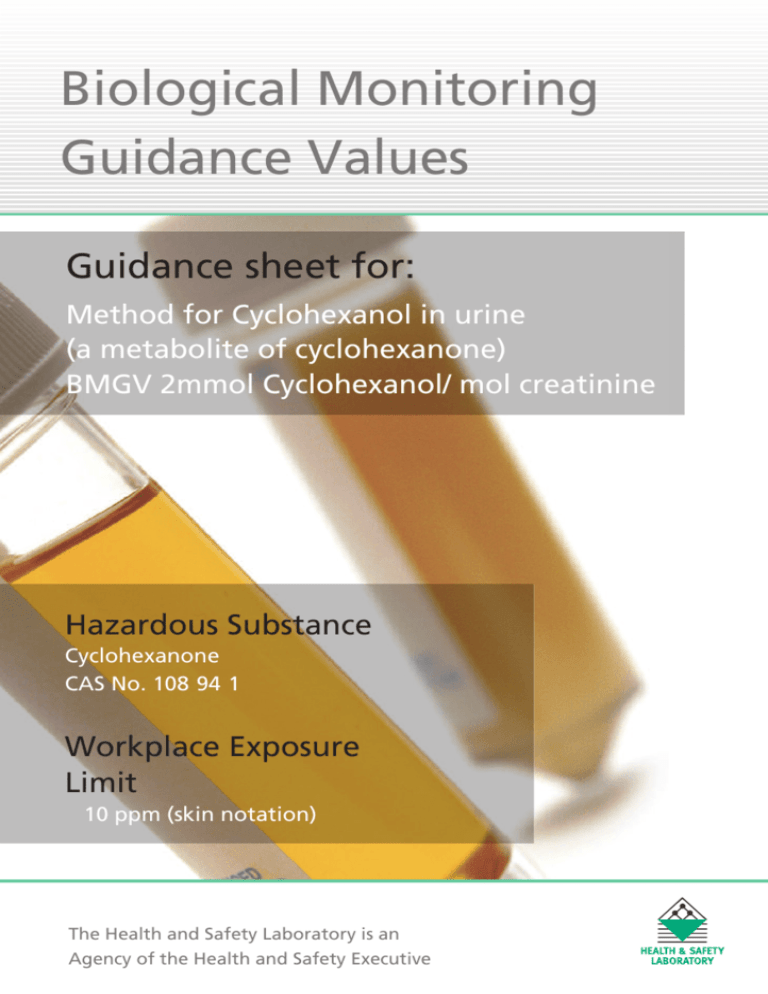
Biological Monitoring Guidance Values Guidance sheet for: Method for Cyclohexanol in urine (a metabolite of cyclohexanone) BMGV 2mmol Cyclohexanol/ mol creatinine Hazardous Substance Cyclohexanone CAS No. 108-94-1 Workplace Exposure Limit = 10 ppm (skin notation) The Health and Safety Laboratory is an Agency of the Health and Safety Executive Biological Monitoring Guidance Values Method for Cyclohexanol in urine (a metabolite of cyclohexanone) Biological Monitoring Guidance Value: Guidance Value - 2 mmol cyclohexanol/mol creatintine Conversion: 1 mmol/mol = 0.886 mg/g Sample Collection Urine samples should be collected at the end of shift into polystyrene universal containers (30ml) Sample Transport to Laboratory Send samples to the laboratory by first class post (or equivalent) to arrive within 48h of collection. If any delay is anticipated, store at –20oC. Packaging must comply with Post Office Regulations. Description of Suggested Method Cyclohexanol and cyclohexanediols can be measured in urine after acid hydrolysis of glucuronide conjugates, extracting twice into diethyl ether and analysed by gas chromatography with flame ionisation detection or selected ion monitoring mass spectrometry. Analytical Evaluation Precision - within day <3% RSD at 25 μmol/l - day to day <16% RSD at 25 μmol/l Detection Limit - 3x background - 5 μmol/l Calibration Range - typically 0-100 μmol/l Sample Stability - > 4 days at ambient Analytical Interferences - None known Other Information Elimination half-time For cyclohexanol in urine - approximately 1 - 2 hours. Cyclohexandiols can also be measured but their longer half-life means that with repeated exposure they may accumulate and their concentration in end-of-shift uine samples will increase during the week. As an example, after repeated daily exposure to 10ppm for 8 h the concentration of 1,2 and 1,4 cyclohexandiols in end-of-shift urine samples on the 4th day would be around 44 and 23 mmol/mol-1 respectively. Biological Monitoring Guidance Values Method for Cyclohexanol in urine (a metabolite of cyclohexanone) Confounding Factors Cyclohexanol is a metabolite of cyclohexane so any co-exposure to cyclohexane or cyclohexanol may contribute to the urinary excretion of cyclohexanol and needs to be noted. The metabolism of cyclohexane to cyclohexanol is mediated by alcohol dehydrogenase and so any co-exposure to ethanol (e.g. drinking during work-time) needs to be noted as it will affect the conversion of cyclohexanone to cyclohexanol. Unexposed Levels None Creatinine Correction Advised Quality Assurance Internal QC - must be established Interpretation Urinary cyclohexanol results reflect systemic exposure to chlorobenzene that may have entered the body by inhalation or through the skin. If biological monitoring results are greater than the guidance value it does not necessarily mean that ill-health will occur, but it does indicate that control of exposure may not be adequate. Under these circumstances employers will need to look at current work practices to see how they can be improved to reduce exposure. Other Guidance Values The ACGIH BEI is 8mg/l (approx 6mmol/mol creatinine). Links EH40 List of Approved Workplace Exposure Limits http://www.hse.gov.uk/coshh/table1.pdf Biological Monitoring at HSL http://www.hsl.gov.uk/online-ordering/analyticalservices.aspx References Ong C N, Sia G L, Chia S E. Phoon W H, Tan K T (1991a). Determination of cyclohexanol in urine and its use in environmental monitoring of cyclohexanone exposure. J. Anal. Tox. 15, 13-16. Mraz J, Galova E, Nohova H, Vitkova D (1994). Uptake, metabolism and elimination of cyclohexanol in humans. Int. Occup. Environ. Health. 66, 203-208 Kawai T, Nakahara Y, Hoiguchi S, Zhang Z, Higashikawa K, Ikeda M (1999) Monitoring of occupational exposure to cyclohexanone by diffusive sampling and urine analysis. Biomarkers. 4(5), 328-341. For Further Advice contact: John Cocker, Health & Safety Laboratory, Harpur Hill, Buxton, SK17 9JN T 01298 21 84 29 F 01298 218172 John.cocker@hsl.gov.uk

